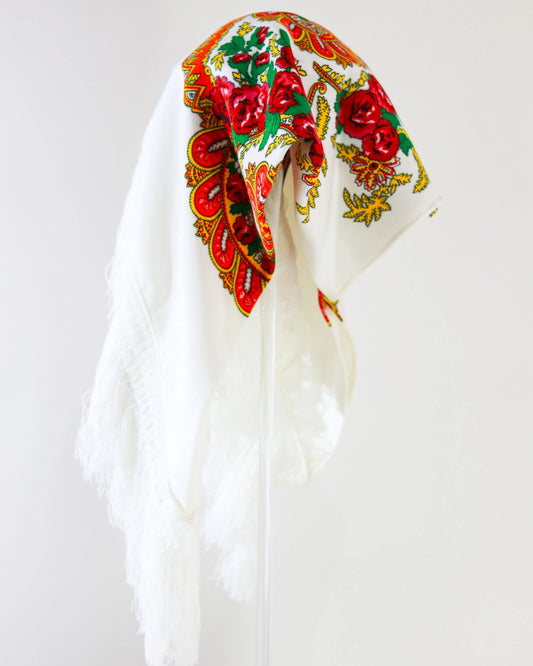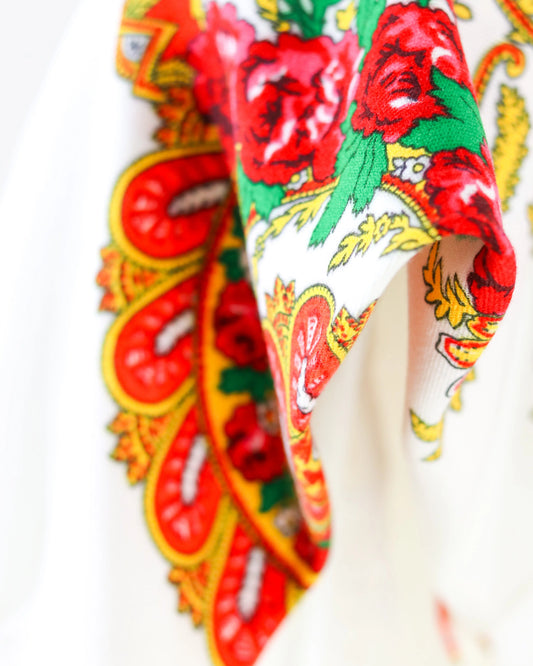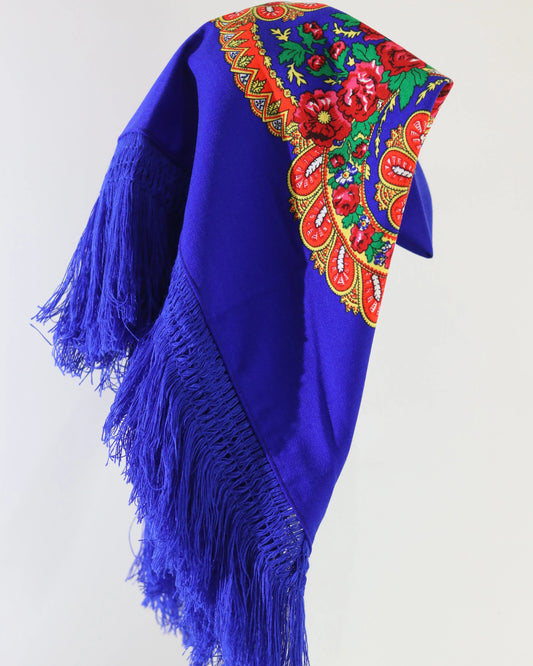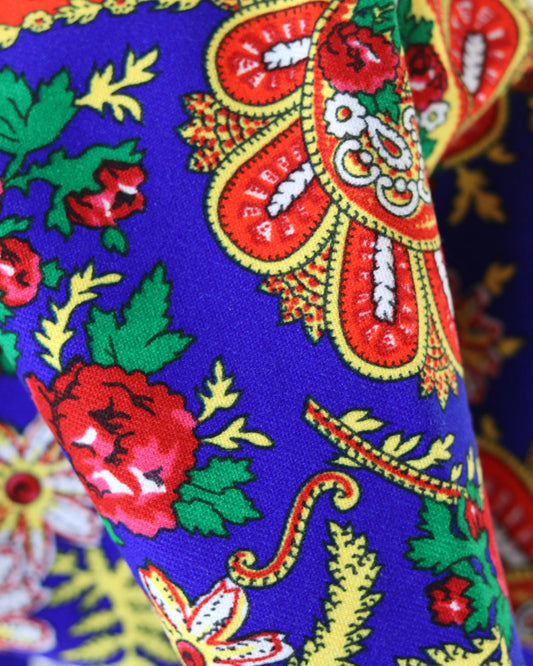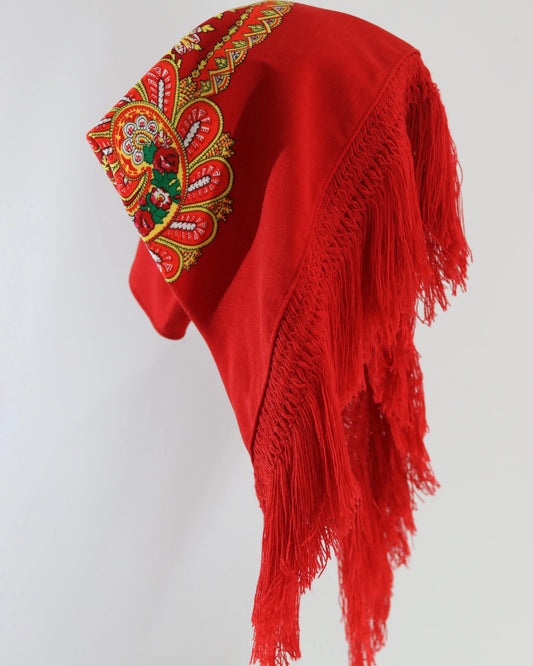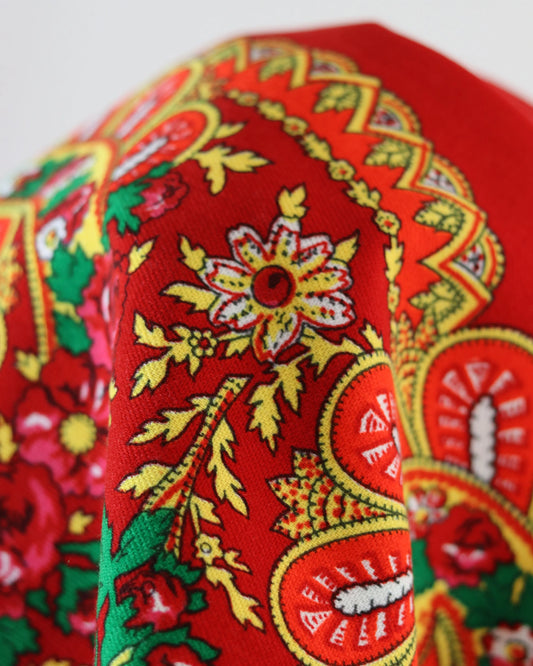Discovering the history and symbolism of salt rugs
At dawn, the streets begin to take on color. Small mounds of salt, white or dyed, run down cardboard molds, creating arabesques, geometric flowers, and ancient symbols. Passersby at this hour see knees on the ground, careful hands, complicit murmurs. All this for a brief moment, a procession that will trample and dissolve the work. And yet, the salt's shine remains in the memory.
There's something deeply human in this desire to decorate the path. It's more than aesthetics. It's belonging, it's offering, it's visual language. Salt, a simple material, becomes a collective voice.
The salt carpet tradition thrives on this paradox between the ephemeral and the lingering in the imagination. It fades quickly, but returns every year, as if the city breathes to the rhythm of this ritual.
Where does this tradition come from?
Carpets have a history spanning centuries. The feast of Corpus Christi took hold in medieval Europe, and from there emerged the custom of decorating streets with branches, aromatic herbs, petals, and, over time, more malleable materials. In Portugal, local creativity defined techniques, colors, and styles. In some locations, salt gained prominence, either due to easy access to salt pans or the luminosity it lends to the designs.
The choice of salt is not arbitrary. It is an ancient product, associated with food, preservation, and trade. Ports, navies, and markets have made salt a precious commodity. Integrating it into a public expression of faith and celebration brings everyday life closer to the sacred.
There's also an Iberian and Atlantic dimension to this ephemeral art. In several regions of the Iberian Peninsula, streets are home to carpets on feast days, with salt, colored sawdust, flowers, and meticulously arranged sand. Some cities have reached monumental proportions, while others remain at home, made street by street, neighborhood by neighborhood. In many parishes, the texture of salt blends with sawdust and flowers, creating silky surfaces, resistant to the breeze and adaptable to any design.
Alongside Catholic rites, there's a universal echo: carpets are forms of welcome. They indicate passage, mark respect for those who come, and point to a direction. And they invite the community to collaborate.
Salt, a humble substance with deep meanings
Salt is an ancient symbol of incorruptibility, protection, and covenant. The biblical expression "you are the salt of the earth" links salt to the responsibility of flavoring and preserving. Culturally, this phrase has extended to the idea of commitment and active presence in the community.
There's also an aesthetic interpretation. The white of the salt illuminates, enhances color, and creates clean contrasts. When dyed, it restores vivid hues, from navy blue to solar yellow, without losing a certain crystalline shine. In the sun, each grain captures the light, multiplying it into discrete points.
On a social level, salt was currency, tribute, and economic power. Placing it on the ground, in a drawing, is a gesture of offering, a temporary gift. It's not a waste; it's a sacrifice in the ancient sense of the word, making something meaningful.
There's also a protective value. In many cultures, salt wards off what is considered impure. Spreading it in front of doors and along consecrated streets has been understood as a form of symbolic care and cleansing. The city watches over you as you prepare your passage.
The path that becomes sacred
A carpet of salt is, above all, a path. The procession that traverses it transforms urban space. The asphalt, the parallel streets, the sidewalk suddenly become a corridor created by anonymous hands, where each curve of the design guides the eye and the step.
Some see these rugs as a silent catechesis. Symbols and colors speak of life, death, rebirth, and hope. Images of doves, bread and chalice, fish, grapes, rays of light. All in simple, accessible codes that children learn to read early, helping to spread the salt with an almost secret pride.
The very act of assembling the rug has a performative side. Late into the night, groups align patterns, correct edges with their fingers, erase, and redo. This is a lesson in patience, coordination, and rhythm. None of this will last, and this awareness makes the moment even more intense.
Techniques, materials and colors
Anyone who has participated knows that technique is as important as intention. Salt requires preparation. Air humidity, grain size, and pigment quality all influence the result. Coarse sea salt provides texture, while fine salt allows for precise contours. Many teams use both in layers.
Colors are created from food-grade aniline dyes or pigments suitable for decorative arts. The salt is dyed in buckets, dried on trays, and stirred to prevent clumping. Air-drying is common, but on busy days, some people use fans to speed up the process.
The designs are created using stencils cut from cardboard or acetate. General lines are drawn first, then colors are added. Craft tricks help: lightly compacting the salt with a board, blowing gently to clean the edges, and spraying a very fine mist of water to create cohesion when the wind threatens.
A practical scheme usually follows these steps:
- Choosing the motif and drawing to scale, with measurements adapted to the street.
- Salt preparation, separating by color and granulometry.
- Definition of the axis and marking on the floor with tape or chalk.
- Placement of contours with stencils, starting with white.
- Color fill from center to edges.
- Final review with a careful eye, edge corrections and cleaning of the surroundings.
Materials in perspective
The diversity of materials offers different textures and possibilities. This small table helps you compare:
| Material | Main advantage | Typical fragility | Resulting visual | Practical observations |
|---|---|---|---|---|
| Fine salt | Precise contours | It hardens with humidity | Uniform shine | Store in closed containers |
| Coarse salt | Texture and volume | Gives less details | Dotted glow | Good for banners and backgrounds |
| Colored sawdust | Light and easy to lay | Fly in strong winds | Matte, deep colors | Mix with minimal wetting |
| Colored sand | Great stability | Weight in logistics | Regular grain, matte | Requires transportation and floor protection |
| Petals and greens | Aroma and organic richness | Withered in the sun | Alive, organic | Combines well with salt for contouring |
Dates, places and variations
In many countries, salt carpets are associated with Corpus Christi. They also appear on other festive calendars, for example, in parish celebrations with strong community participation, at municipal festivals, or at events that celebrate ephemeral arts. The practice has adapted to the differences in climates, urban layouts, and processional routes.
Wherever there are seaside resorts or maritime traditions, salt is readily available and makes cultural sense. Narrow streets, old neighborhoods, promontory overlooking the coast—everything becomes a backdrop. On some islands, flowers and leaves predominate, but it's common to see white streaks of salt enhancing the design, a kind of light on the ground that guides the eye. On the mainland, there are places where colored sawdust reigned for decades, and gradually, salt was added to create details and contours.
There are styles that are recognizable from afar. Geometric and symmetrical designs, plant motifs, figurative compositions. In certain courses, street teams combine to maintain a theme and color palette. In others, variety marks the local style, each piece with its own personality, like a conversation where each neighbor has their own voice.
The meaning of color
Color is language. Blue conveys serenity and also evokes the sea and Mary's mantle in classical iconography. Red can signify love, courage, and sacrifice. Green connects to hope and the rebirth of life. Gold opens the door to celebration, to glory, and to the sun.
When choosing the palette, teams balance contrast and continuity. An entire street in cool tones creates a more contemplative experience. Alternating warm and cool tones gives rhythm to the passage. And white, always, ties the whole together.
In many compositions, color follows a catechetical interpretation. In other cases, the decision is aesthetic or influenced by the group's taste. The result, when well-balanced, speaks to both believers and those who simply appreciate beauty.
Community in action
Laying salt mats is a school of cooperation. It requires design, materials, a schedule, task distribution, someone to liaise with city halls and residents, and someone to take care of the final cleanup. The list is long.
Successful projects usually have:
- Clear coordination, with one person or small group providing guidance.
- Materials prepared in advance, avoiding last-minute rushes.
- Communication with those who live and work on the streets involved.
- Careful collection after the party, leaving the space spotless.
The conversations that arise during the assembly process are part of the magic. Neighbors who rarely cross paths discover affinities while dyeing salt or aligning a stencil. Elderly people pass on techniques to younger people, and they invent solutions that speed up the work. Tradition breathes because it's passed on.
Sustainability and care
Salt is part of the cultural landscape, but it requires attention in the urban environment. What goes on the ground must come off the ground without leaving any marks. Complete collection of the material prevents runoff from carrying salt into green areas or streams. Food pigments and appropriate paints reduce risks to soil and water.
Good practices that make a difference:
- Cover sensitive areas with a base of craft paper or fabric that allows you to lift the set without dragging it.
- Choose low-impact pigments and avoid unnecessary glues.
- Coordinate with cleaning services for immediate collection after passing.
- Reuse what is possible, saving uncontaminated salt and stencils.
The festival is more beautiful when you respect the place. And the place reciprocates, year after year, with streets that once again shelter ephemeral art without scars.
How to set up a small salt mat at home or school
A didactic exercise, ideal for explaining history, symbols and teamwork.
- Define a simple theme, for example, a dove, a fish, or a geometric pattern.
- Prepare salt in three or four colors using food-grade aniline dyes. Dry thoroughly.
- Cut out a stencil from cardboard. Reinforce the edges with tape to make it last.
- Protect the surface with paper or plastic, and secure it to prevent slipping.
- Fill outlines with white salt, then color areas.
- Photograph the results and discuss what went well and what can be improved.
- Finally, collect all the material, separating it by color for reuse.
This activity gives scale to the real process and opens the door to questions about meaning, technique, and aesthetics. It also conveys the idea of care, from preparation to cleaning.
Questions that decode the ritual
- Why do we use salt and not just flowers? The answer combines availability, symbolism, and visual effect.
- A carpet is meant to be walked on, so why invest so much effort? Because beauty has value in the present, and because stepping on it is part of the ritual gesture.
- Who decides the designs? Most often, local groups, catechists, local artists, and residents who repeat passed-down motifs.
- Is it possible to innovate? Yes. While respecting the journey and the community, new techniques, palettes, and material combinations emerge.
Look closely, look from afar
Up close, salt is a grain. Each crystal, a tiny prism, captures light. The finger smoothing an edge, the palm leveling, the brush cleaning the corners—everything is a minimal gesture. The scale of attention is microscopic.
From afar, the carpet is a drawing at ground level. Lines emerge, figures repeat rhythmically, the street becomes a frieze. Those who see it from above understand the whole. Those who walk at foot level grasp the texture.
Oscillating between these two perspectives helps us understand the cultural significance of rugs. Art lies in the detail and the global vision, in the hand that places the grain and in the community that gives meaning to the journey.
Echoes in collective memory
Each edition leaves its own stories. The night the wind forced them to redo that corner three times. The child who took home a stencil and hung it on the wall. The woman who, at 80, still knows the right level of humidity for salt to set without sticking.
There's also photography, this emotional archive. Family albums preserve rugs like birthdays. Some perspectives are already seeking new angles, drones capturing the geometry of streets, time-lapse videos showing the rug being created.
And yet, beyond the record, what matters remains: a brighter floor. A shared gesture. A bond renewed without announcing its end. When the cleaning efforts pass and the street returns to its daily routine, a brief glow lingers in the air, as if each step retained a bit of that light.

